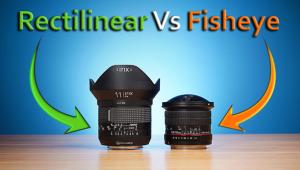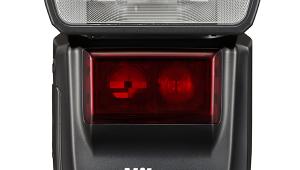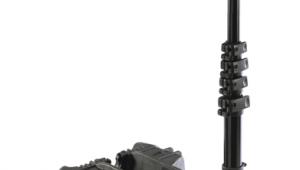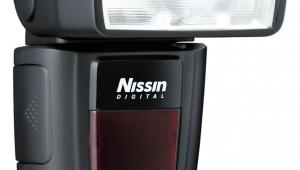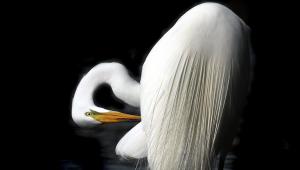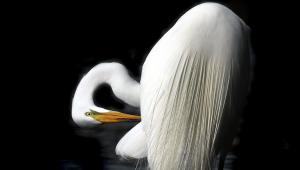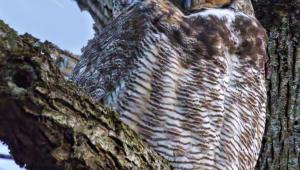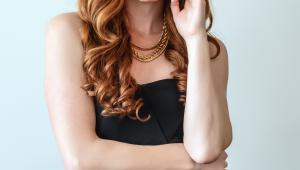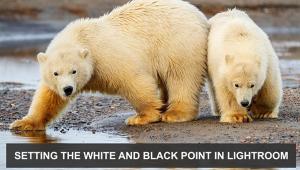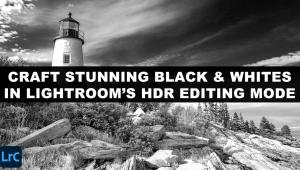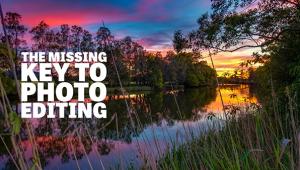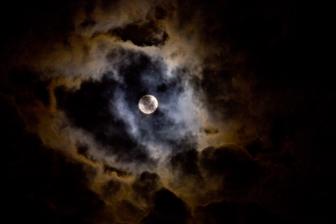photokina: Pro Lighting Report: Leds Come On Strong
Roger Hicks’s “Pro Lighting Report” is part of our continuing series of reports from the photokina show. With a giant hall filled with lighting products, Roger reports here on what caught his eye and what he saw as the key trends at the show. We will continue with new lighting product reports in coming issues, with a special report coming out of the WPPI show held in March, and will catch up on more new products not mentioned here then. We consider lighting a key issue for all photographers and will have more tests ahead throughout the year.—Editor
In the realms of lighting, LEDs were the key trend at photokina.
Yes, at the 2010 show there were plenty of multi-LED lights, but this year, big “three-chip” LEDs offered enough power for floodlights and focusing spots.
LED Evolution
Of course LEDs are nothing new, but even a decade ago, they were used almost exclusively for warning lights and a few small flashlights: the idea of full-scale studio lighting with LEDs would have been sheer fantasy. It’s true that if you need a lot of power, delivered quickly, flash remains unbeatable, and in the mid range, there is still a good deal to be said for fluorescents; but for smaller advertising shots and numerous other subjects, especially still life, LEDs have all the advantages. Many people find continuous lighting easier to work with; they run cool (though not stone cold); as a (very) rough rule of thumb, they give at least 10 times the power per watt as compared with tungsten lights, so a 50-watt LED rig equates to at least 500 watts of tungsten lighting; and they don’t have the massive current draw which characterizes the first few moments of flash recycling. This draw can, in extreme cases, even blow fuses or trip circuit breakers.
Color Fidelity
Also, their color fidelity is improving rapidly. The CRI (Color Rendering Index) was established by the CIE (Commission Internationale de l’Éclairage, International Lighting Commission) and is presented, effectively, as a percentage, so a CRI of 100 would be identical to a full-spectrum black body radiating at the stated temperature. Old (or cheap) LEDs have a CRI of less than 75, whereas the best three-chip LEDs have CRIs well into the 90s. Digital cameras can adjust better to low CRIs than film (set the white balance manually), but even so, a high CRI is highly desirable.
Of course, CRIs are always something of an approximation, and even the best LEDs may need “gelling” (adjusting with filters) for very critical applications. This is why (for example) Rotolight sell their new Anova series of video lights with filters for fine-tuning both color temperature and exposure. Better still, they allow the use of a $6 iPhone “app” as a form of color temperature meter: certainly a lot cheaper than my $1000 Gossen color temperature meter! Anovas are the “big sisters” of the company’s earlier, smaller “interview” RL48-B video lights, already renowned for their build quality and ease of use.
Predictably, there is a strong correlation between CRI and price, which is why two different lights can appear substantially identical but differ in price by a factor of two or three: something like the Bowens Limelite will cost a lot more than a cheap knock-off. If in doubt, check the CRI, and remember, too, that a Bowens kit is a lot less likely either to electrocute you or tear your skin open on a sharp and badly-finished corner of bent metal.

All Photos © Roger Hicks Ltd.
CRIs are also important with fluorescents, and explain why photo-quality lights cost so much more than domestic fluorescent lamps. Another thing to consider with LEDs is that dimming is still something of a black art, and that CRIs may vary quite widely if an LED is dimmed. This is something else to bear in mind when considering the purchase of LED lights, and (once again) quality and consistency cost money. “International white light” comes in four flavors: sensitometric (SA) at 2848K, SB at 4800K, SC at 6500K, and SD at 7500K. I typically set my M9 at 5800K as a general-purpose daylight value.
Fluorescent Replacement?
In a very few years, it is quite likely that LEDs will replace fluorescents almost entirely, and that they will eat even further into the flash market. It’s also worth noting that it is perfectly possible to use two sets of LEDs, one balanced for tungsten and one for daylight, in the same head. By varying the mix, it is possible to match quite a range of color temperatures: typically, from around 2700K (domestic incandescent lamps) to 5600-5800K (daylight-balanced film). One of the Limelite options offers this flexibility.
A Wide Range
There were so many choices in LED lighting, from clip-together panels to ringlights (Falcon Eyes had a particularly attractive looking version) to spots and floods, that it is impossible to cover them all in a small compass, so all I’ll say is that if I had (say) $10,000 to spend on studio lighting, I’d be looking very hard at the aforementioned Bowens Limelite; at Dedolight, which offers the most extraordinary precision and control, such as the ability to paint a thin blade of light across the subject; and at Lupolux, who made the best focusing spots that I saw at the show, though Broncolor’s MobiLED system is arguably more versatile, so which you choose would depend on what you habitually photograph. The reason I set the very high level of $10,000 is not so much that the units themselves are expensive (though they’re not cheap), but rather that with $10,000 I wouldn’t need to make too many hard decisions between which units to buy.
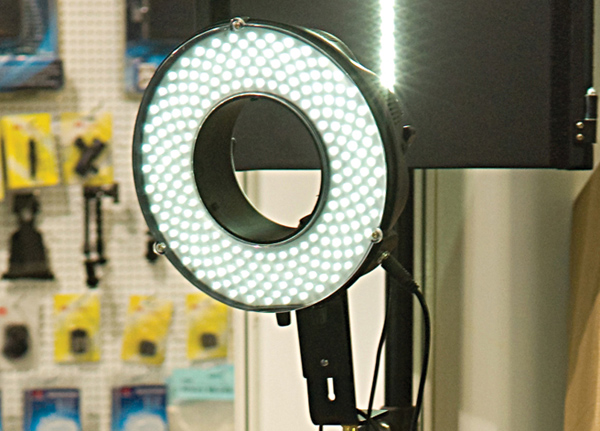
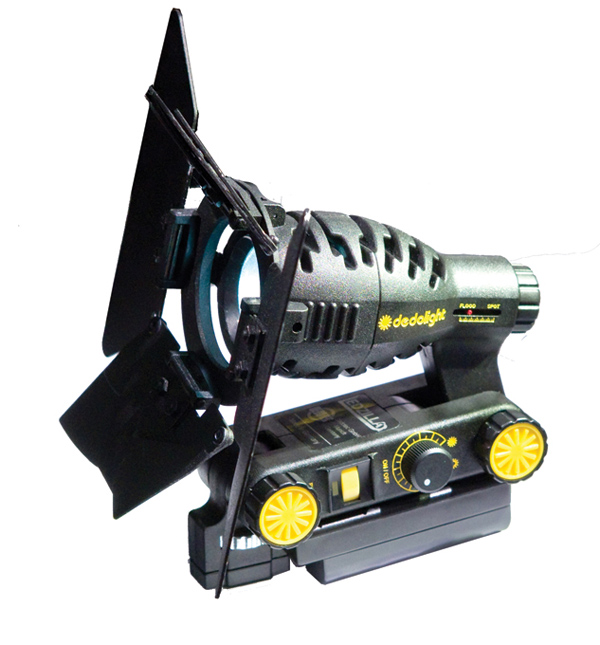

Studio Flash
In studio flash, the trend was evolutionary rather than revolutionary: smaller, lighter power packs, more power, longer-lived batteries (for non-mains generators), quicker recycling times, greater control over flash duration. The last can be important. When I was an assistant 40 years ago, flash duration on a big Strobe 5000 could be as much as 1/300 sec: enough for subject movement during the flash with some subjects such as fashion photography of dancing or moving models. Today, depending on the power you need, you can dial in as little as 1/25,000 sec (with the Profoto Pro-B4 1000 Air), which of course would provoke reciprocity failure with most films. Quite a few manufacturers featured pictures of leaping or dancing models “frozen” in mid-air as evidence of their short flash durations. Profoto went still further with true stroboscopic effects: the 1000 Ws Profoto Pro-B4 1000 Air can shoot up to 30 flashes per second at modest powers, or has a recycle time of under 1 second at full power. It is worth checking, though, whether color temperatures are constant across different flash durations. The best manufacturers will be. I am told that others may shift toward blue or red, depending on the duration. Understandably, though, those where this is a risk are unlikely to publicize the fact.

Generally, most high-end professional flash units are extremely well made and long-lived, with a life measured in decades rather than years: at least 20 years, quite often 30 or more. This is why I would look at least as closely at customer service and at the general attitude of the company as at the specifications of the flash units themselves. It is also why some manufacturers have more coverage here than others: they took the trouble to go over their new products with me, rather than handing me a card and saying, “It’s all on the website.” With this in mind: Fans of Bowens will be pleased to know that they have a new 1200 and 2400 ws generator-plus-head system, the Creo, to run alongside their well-established monobloc heads; the new Broncolor heads with the LED modeling lights have already been mentioned; I was well taken with the new Hensel Porty 600 and 1200 ws battery-powered units; the Profoto Pro-B4 1000 Air is gorgeous, but the price reflects this; and for amateur use at a good price, Interfit’s latest twin-head, remote-control monobloc system, the EX400 Ti, is hard to beat. Of course it’s built in China, but there’s a big difference between low-end direct-export monoblocs from a company no one has ever heard of, and monoblocs built for a company that has a reputation to uphold.

A further cunning trick from Broncolor was a 30-watt LED modeling light (in the MobiLED) which can be run straight off the removable battery pack. The battery pack can in turn be hung on a waist belt, and the modeling light can then be used just as extremely portable, long-lived continuous lighting. This idea—LEDs and batteries—may well be as important in the future as continuous lighting without being built into a flash head.
As well as some new heads—with the usual improvements in size, weight, power, and ergonomics—Elinchrom now offers a choice of lithium-ion batteries (lighter, higher capacity) and lead gel (cheaper). Before automatically choosing the “better” (= more expensive) option, it may not be a bad idea to look at both your budget and your real needs. I strongly suspect that lead gel would be more than adequate for me, for example.
Modifiers
Because flash units are so long-lived, light modifiers are something the average photographer will replace more often. Although amateurs normally stick with a small range of modifiers—spill kills, shallow reflectors, umbrellas, and softboxes—there are numerous specialist light modifiers which will produce results that are inimitable in any other way: Broncolor is especially inventive in this regard.
Collapsible light modifiers are of especial interest to amateurs whose “studios” must often do double duty as garages or living rooms; to professionals who hire studios, and need to transport their kit; and to people like me who, although they have permanent studios, don’t have much in the way of storage space in it. I saw three collapsible light modifiers at the show that I particularly liked.
The first was an extremely well-made “beauty light,” also known as a “bowl and spoon” from Chimera. The “bowl” is the reflector, and the “spoon” is the bit that covers the light and stops it from being too hard. The effect is different from either an umbrella or a softbox, being somewhat more directional but still very gentle.

The second was a deep reflector from Broncolor, the Para 88. Instead of struggling with the usual bendy-rods, there are just four over-center handles that allow you to collapse or set up the whole thing in a few seconds.
The third was a series of variable-area, variable-shape softboxes from Lastolite. The principle behind them is very simple. There’s just a gusset that can be zipped in or out, so you can make a broad softbox (both gussets extended), a narrow softbox (both gussets closed), and even a trapezoidal softbox (one open, one zipped).

On the topic of light modifiers, I should also mention two for on-camera flash units. ExpoImaging’s Rogue FlashBender now has a range of diffusers to use with their clever bendable light modifiers, and as ever, LumiQuest has a couple of small, new diffusers. Both ExpoImaging and LumiQuest have inevitably been the subject of cheap knock-offs, but neither is very expensive, and the Rogue FlashBender has a one-year guarantee, while LumiQuest guarantees are for life.

And that’s it. I didn’t have time to check out on-camera flash units, and I didn’t see any new tungsten hot lights. New HMIs are still in evidence, especially from the French company K5600, but I can’t help feeling that the days of HMI lamps are numbered, because LEDs don’t require anything like such complicated electrics, and are ever cheaper. And, as one manufacturer engagingly told me, “We quote a5000-hour life for our LEDs, but that’s to give ourselves a safety margin. The people we buy the LEDs from told us 10,000 hours, but then admitted that they didn’t really know either.” So, I’ll sum up the way I began: as far as I can see, LEDs are the way forward.
Contacts
Bowens: www.bowensdirect.com
Broncolor: www.broncolor.com
Chimera: www.chimeralighting.com
Dedolight: www.dedolight.com
Elinchrom: www.elinchrom.ch
ExpoImaging: www.expoimaging.com
Falcon Eyes: www.falconeyes.com.hk
Hensel: www.henselusa.com
Interfit: www.interfitphotographic.com
K5600: www.k5600lighting.com
Lastolite: www.lastolite.com
LumiQuest: www.lumiquest.com
Lupolux: www.lupolux.com
Profoto: www.profoto.com
Rotolight: www.rotolight.com
R.T.S. Inc. (Rotolight): www.rtsphoto.com
- Log in or register to post comments
